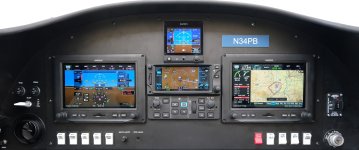andyhudson
Member
I bought a flying RV-7A and it has a VP-X system in it. I had to replace it with a VP-X Pro due to needing more circuits, and so far it has been fine. I'm trying to find out why it is so great. Is it great? If so, why? Does anyone know why it's "better" that regular circuit breakers?
Anyway, I'm now going to replace my nav/strobes and tail beacon with AeroLeds and I need to work through the VP-X. Anyone know how easy/difficult that's going to be?
Anyway, I'm now going to replace my nav/strobes and tail beacon with AeroLeds and I need to work through the VP-X. Anyone know how easy/difficult that's going to be?


